#oradour
Text
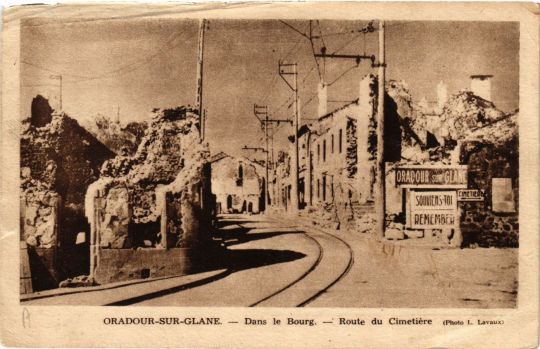
Ruins of Oradour-sur-Glane after the 1944 massacre, Limousin region of France
French vintage postcard
#vintage#oradour-sur-glane#tarjeta#france#oradour#massacre#briefkaart#postcard#photography#region#postal#carte postale#ruins#limousin#sepia#1944#ephemera#historic#french#ansichtskarte#postkarte#glane#postkaart#photo
12 notes
·
View notes
Text
Today on the blog :
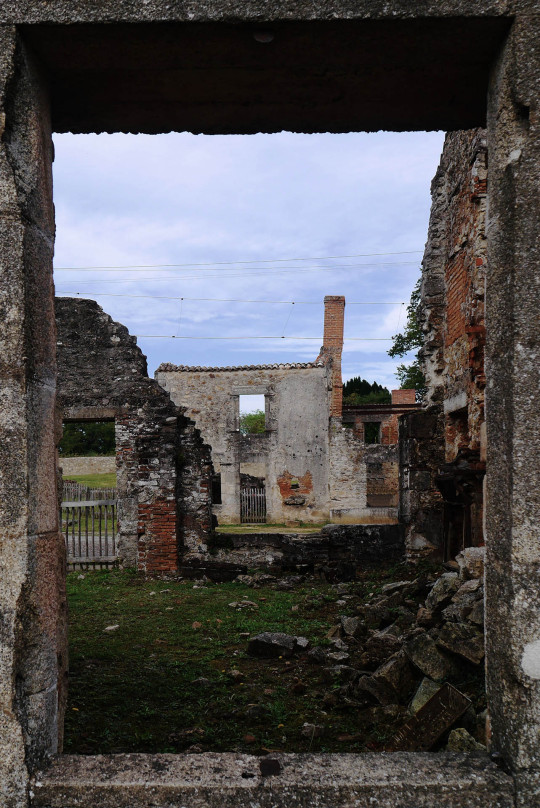
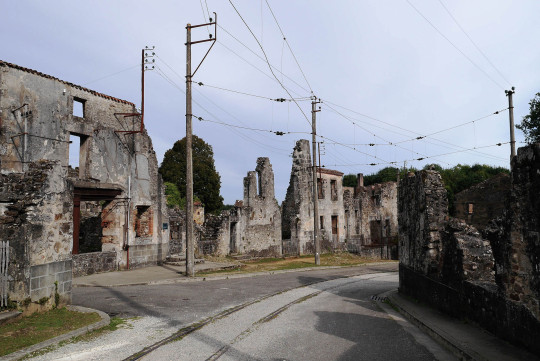
#today on the blog#sunday walk#wwii#france#oradour sur glane#massacre#memory#war#victims#ruins#ruin#memorial
4 notes
·
View notes
Photo

Oradour-sur-Glane
4 notes
·
View notes
Photo
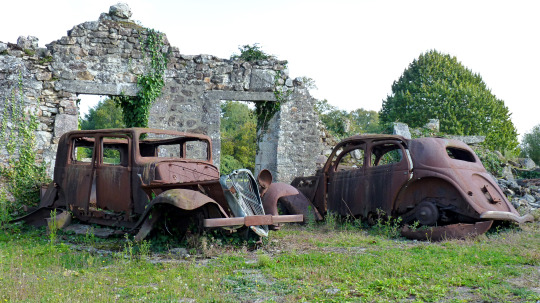
Oradour-sur-Glane...
2 notes
·
View notes
Text
#notable deaths#obituaries#deaths (obituaries)#in memoriam#obituary#deaths#world war 2#massacre at oradour-sur-glane
0 notes
Text
Roger Godfrin-Sole child survivor.
Roger Godfrin, the only survivor of a massacre during which Nazi troops locked 643 citizens (including 500 women and children) inside a church and set fire to it on June 10, 1944 in Oradour sur Glane, France.
Only about 20 people decided to make themselves scarce when the The 2nd SS Panzer Division Das Reich arrived, mostly people who had more reason than most to be suspicious, including some…
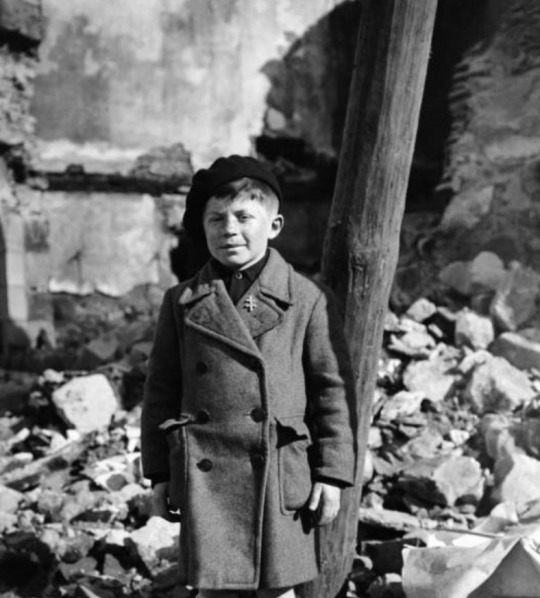
View On WordPress
1 note
·
View note
Text

Roger Godfrin, the only survivor of a massacre during which Nazi troops locked 643 citizens (including 500 women and children) inside a church and setting fire to it, Oradour sur Glane, France. June 10, 1944
35 notes
·
View notes
Text
2nd SS Panzer Division Das Reich
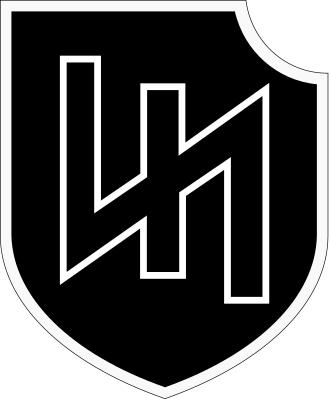
These are some facts and curiosities about the 2nd SS Pazer Division ''Das Reich''
It was an elite division of the Waffen-SS of Nazi Germany during World War II, formed from the SS-Verfügungstruppe (SS-VT) regiments.
The division served during the invasion of France and took part in several major battles on the Eastern Front, including in the Battle of Prokhorovka against the 5th Guards Tank Army at the Battle of Kursk.
In April 1944 Das Reich established a new base near the town of Montauban in southern France. The location was chosen so that the division could respond quickly to the planned Allied invasion of France on the Atlantic coast or the Mediterranean Sea.
As a consequence of the sabotage of the rail cars, Das Reich left Montauban on 8 June with 1,400 vehicles and proceeded northward by road. Travel by road caused the steel tracks of the tanks and assault guns to wear out; vehicles broke down frequently; and fuel was in short supply.
During the invasion of Yugoslavia in April 1941, members of the division committed crimes against the civilian population and Yugoslav prisoners of war in the Alibunar area (Vojvodina, Serbia), where approximately 200 people were killed.
The division massacred 642 French civilians in the village of Oradour-sur-Glane on 10 June 1944, in the Limousin region.
Following the war, one of the regimental commanders of the division, Otto Weidinger, wrote an apologia of the division under the auspices of HIAG, the historical negationist organization and a lobby group of former Waffen-SS members.
The newspaper of the same name ''Das Reich'' was a Nazi weekly.
Sources:
Wikipedia: 2nd SS Panzer Division Das Reich
Military Wiki: 2nd SS Panzer Division Das Reich
if you don't like it go with your life
I DON'T SUPPORT NAZISM, FASCISM OR ZIONISM IN ANY WAY, THIS IS AN EDUCATIONAL POST
38 notes
·
View notes
Text
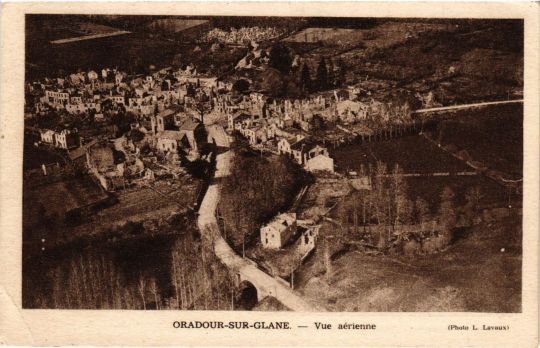
Ruins of Oradour-sur-Glane after the 1944 massacre, Limousin region of France
French vintage postcard
#historic#ruins#briefkaart#massacre#postkaart#carte postale#ephemera#oradour-sur-glane#tarjeta#photo#france#postcard#postal#1944#postkarte#limousin#glane#region#ansichtskarte#french#sepia#oradour#photography#vintage
7 notes
·
View notes
Text
Hier à la med on a eu un vieux qui vient régulièrement nous demander des photocopies d'images et de photos parce qu'il fabrique des structures en bois sur des thèmes précis et là il voulait en faire une sur la libération de 44 donc il avait un set de table d'année de naissance de 1944 vous savez les trucs qu'on trouve à gifi avec les éléments marquants de l'année ? On a regardé par curiosité avec mon collègue, il y avait un encart sur Oradour-sur-Glane avec un petit texte qui parlait du massacre et à la fin du texte c'était écrit : "À visiter !" Comment ça "à visiter !" ?? comme si c'était le parc astérix ?? 2 lignes au-dessus vous parliez des pauvres gens qui ont été tués un peu de décence svp 😭😭😭
21 notes
·
View notes
Text
Nicola Trahan, who has died aged 97, joined the French resistance as a schoolgirl and was awarded the Croix de Guerre avec Palme for her bravery during “numerous dangerous missions”, in particular a series of battles between her Maquis and the notorious 2nd SS Panzerdivision Das Reich. After the second world war she settled in the UK, where she served with the Soldiers’, Sailors’ and Airmen’s Families Association (SSAFA) for 50 years.
Aged 16, while still at school in Valençay, Indre, in central France, she joined the Forces Françaises de l’Intérieur (FFI), the resistance organisation run by the Gaullist French authorities in London and known as the Armée Secrète.
According to her French military file, Trahan became a member of the North Indre Maquis, led by Francis Perdriset, a former French army officer who took charge of FFI resistance operations in that area in July 1943. Her main role was as a courier delivering messages twice daily between the various resistance teams.
She also worked as part of the Maquis’ medical team and, amid a heavy German military presence, used her trips cycling between the teams to collect intelligence. A note in a file has one resistance fighter telling another that Trahan would sometimes be late because she liked to sit by the road watching the Germans while eating her lunch. “Don’t worry,” he said. “It provides us with valuable information.”
In an interview with a French newspaper following the liberation of France, Trahan said that once when she was stopped by the Germans she screwed up her FFI identity pass into a ball and swallowed it to avoid arrest. She also recalled taking part in firefights and on one occasion shooting and wounding two German soldiers: “I really liked ambushes; when we put together a team and went off in full truckloads. I had a revolver and a machine gun.”
In July 1944, Perdriset and his Maquis began working closely with a British Special Operations Executive (SOE) officer Pearl Witherington (later Cornioley), who was also based in North Indre.
Witherington had set up the SOE’s Wrestler circuit in May that year. But on 11 June, five days after the D-day landings, she and the small number of resistance fighters she had assembled were attacked by a much larger German force. They fought them off but Witherington decided she needed an experienced military officer to help her to reorganise her forces.
“Finally, on 25 July [1944], after I had asked repeatedly for a military commander, to my great relief one arrived,” she recalled in her memoirs. “He was an army captain called Francis Perdriset.”
From that point on, the North Indre Maquis was closely integrated with the SOE Wrestler team. Trahan recalled meeting Witherington once, at a parachute drop of weapons and other supplies, where resistance members would have been called upon to remove the supplies to a safe location.
Shortly after Perdriset took over as Witherington’s military commander, elements of the German 2nd SS Panzerdivision Das Reich arrived in the region on their way north to Normandy, having been ordered to destroy the resistance along the way.
They had previously massacred an entire village at Oradour-sur-Glane and, from mid-August, launched a series of attacks against resistance groups in the Indre area, most notably in Valençay itself, where Perdriset was present.
“The Germans did a lot of damage in Valençay,” Witherington recalled. “I wasn’t there but Francis was. He was told to stand against a wall, he really thought he had had it. The Germans set fire to things, shot, killed. It wasn’t as bad as Oradour-sur-Glane but it wasn’t a pretty sight.”
In his recommendation for the award of the Croix de Guerre, Perdriset said Trahan, then only 17, “notably distinguished herself at Valençay from 20 to 30 August 1944 by bringing her commander valuable information which she gathered at the heart of enemy operations”.
Born Nicole in Berck-sur-Mer, in the Pas de Calais, she was the daughter of André Trahan, who worked in the insurance industry, and Jeanne (nee Bourzes), a professor of English.
Nicole initially boarded at the Collège Cévenol at Le Chambon-sur-Lignon in south-central France. She later recalled that her parents took her to the UK when the Germans occupied northern France in 1940, but by 1942 she was at Cours Guynemer, a private school in Valençay.
After the war, Trahan went to the Sorbonne to study philosophy but, having decided that it was not for her, she trained as a nurse at the Ecole d’Infirmières des Associations Diaconesses in Paris, and at Brighton General hospital, in East Sussex, qualifying in 1953. She subsequently worked as a health visitor in Cheshire. She anglicised her name from Nicole to Nicola and was naturalised British in 1957.
The following year she joined SSAFA, first as a member of its nursing service, then as a health visitor working with service families in Germany, Belgium and Hong Kong. Trahan served with the association for 30 years and after retirement continued to work for them as a volunteer for a further 20 years.
Trahan settled in Orcheston, Wiltshire, where she was also a volunteer at Salisbury Cathedral, and enjoyed swimming and walking her dog.
In 2005, she was invited to the unveiling by Queen Elizabeth II of the monument in Whitehall to The Women of World War II, followed by a lunch for female veterans at Buckingham Palace. In 2008 she was appointed MBE.
Nicola (Nicole) Marie Pauline Trahan, resistance fighter and nurse, born 21 December 1926; died 18 January 2024
12 notes
·
View notes
Text

Today's photo with the most hits: the memorial centre at Oradour sur Glane. I have no idea why he's doing a handstand...
0 notes
Text

Le complexe médiatico-politique français évoque les 87% de Poutine en y voyant la preuve que c'était une élection fantoche et courue d'avance parce que la Russie est un régime verrouillé qui ne laisse pas s'exprimer convenablement les oppositions.
Pauvre Russie qui n'a pas la joie de vivre, comme nous, des élections vraiment saines et démocratiques où les médias se contentent d'informer sans interférer dans le processus de réflexion des électeurs par d'interminables campagnes de dénigrement, sans évoquer trente fois par jour le souvenir pourtant lointain des bottes nazies, sans faire croire aux électeurs qu'en dehors du seul candidat qui vaille l'autre est un démon qu'il faut combattre de toutes nos forces sinon le fascisme va revenir et déferler sur nous.
En somme des élections équilibrées où les candidats sont tous traités équitablement, des élections françaises quoi, où les électeurs ne sont soumis à aucune pression des pouvoirs et s'en vont dans l'isoloir l'esprit léger, sans craindre que leur vote risque de faire revenir Hitler, les camps, Drancy, Oradour et Klaus Barbie.
Des élections où le candidat qui a le plus de chances de l'emporter n'est pas la cible d'une campagne judiciaire et médiatique à quelques semaines du premier tour et condamné pour cela à voir son résultat être divisé par deux, permettant ainsi la victoire d'un minet sorti de nulle part à qui les mêmes milieux médiatiques et judiciaires déroulent depuis son élection un tapis rouge qui lui permet de faire tout ce qu'il veut sans jamais être dérangé y compris par les prétendus contre-pouvoirs.
Jonathan Sturel
3 notes
·
View notes
Photo
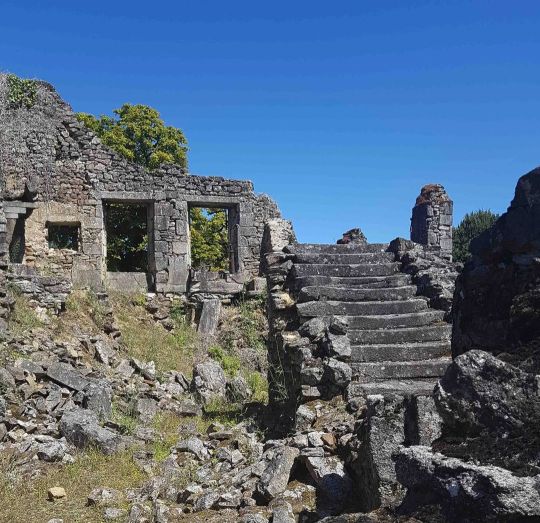
Oradour sur Glane, France - 2019
#oradoursurglane#frankrijk#worldwar#history#urbexpeople#urbex_supreme#urbex#urbex_utopia#urbexworld#abandoned_excellence#abandoned#abandonedplaces#abandonedafterdark#kings_abandoned#travel#france#travelphotography#travelgram#reizen#photography#photographysouls#photographylovers#photographyislife#fotografie#amazing#architecture#architecturelovers#architecturephotography#stairs#interesting
33 notes
·
View notes
Text
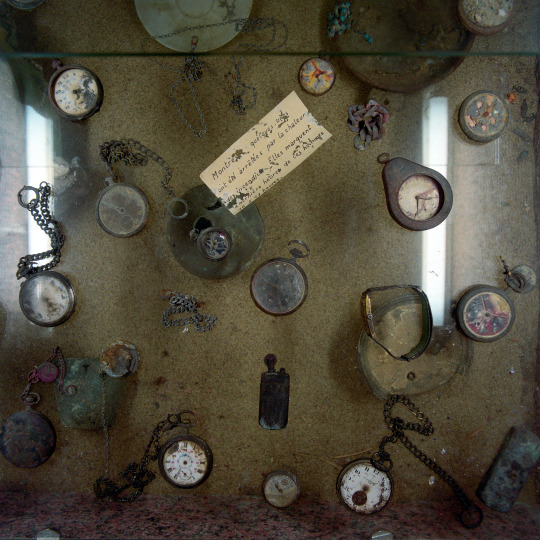
Oradour — 1994, Série de vingt-quatre photographies couleur, tirages RA-4, contrecollés sur aluminium, 60 x 60 cm. Photographie : © Arno Gisinger.

11 notes
·
View notes
Text
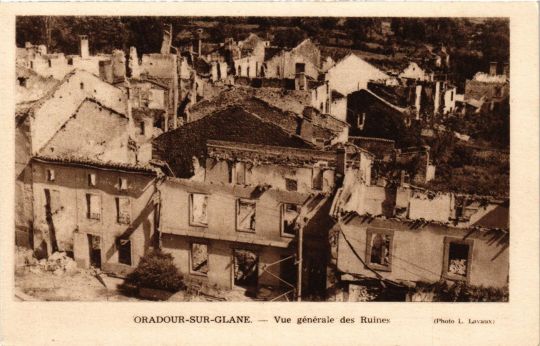
Ruins of Oradour-sur-Glane after the 1944 massacre, Limousin region of France
French vintage postcard
#vintage#oradour-sur-glane#tarjeta#france#oradour#massacre#briefkaart#postcard#photography#region#postal#carte postale#ruins#limousin#sepia#1944#ephemera#historic#french#ansichtskarte#postkarte#glane#postkaart#photo
5 notes
·
View notes